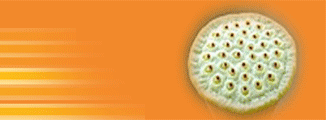Medicinal Plants
by Physician Lee Song Cheong
& Bro. Ooi Chooi Seng
|
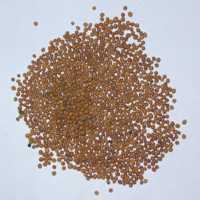 Mustard Seeds
Mustard Seeds |
In Chinese medicine, mustard seeds is used for warming the lungs qi, feverishness, clears the sinuses, relief breathing congestion, expels cold, influenza, relief throat problems, eliminating excessive phlegm and bile in the body as well as the elimination of worms in the intestine. Bathing in a few spoonfuls of grounded mustard powder sprinkled into a bath is said to relieve muscular aches and pains. The seed is is well known for its digestive property and is eaten as a tonic and appetite stimulant which aids digestion, it is also diuretic and emetic.
|
The rubefacient action of mustard has causes a mild irritation to the skin, stimulating and increases blood circulation will aid chilblains, hence its use externally as a mustard plaster, a dressing used to bring increased blood flow to inflamed areas of the body relieving muscular and skeletal pain. This is because it can dissipates nodules, reduce swelling, alleviate pain, and cures yin type boils.
As a traditional folk medicinal plant with ancient roots, mustard has traditionally been heralded as a curative. In Europe, old herbals suggested mustard for treating alopecia, epilepsy, snakebite, arthritis, rheumatism, inflammation, and toothache. Swallowed whole when mixed with molasses, it acts as a laxative. A decoction of the seeds is used in the treatment of indurations of the liver and spleen. It stimulates the kidneys. It is also used to treat carcinoma, throat tumours, and imposthumes. For feverishness, colds, and influenza, mustard may be taken as a tea. A liquid prepared from the seed in hot water, when gargled, is said to help tumours of the "sinax", the relief of sore throats. The infusion or poultice of mustard will aid in cases of bronchitis.
|
Mustard is a nutritious food containing 28% to 36% protein. Mustard does not contain antigrowth factors like those found soybeans or the anti-thyroid compound common to related spices. Its higher protein content is of particular interest when applied to processed meats. The vegetable oil of mustard is nutritionally similar to other oils and makes up 28% to 36% of the seed. Erucic acid is a significant component of mustard oil. Mustard oils are the characteristic flavor components of whole seed, ground mustard, and mustard flour (powder). The essential oil Tocopherols present in mustard inhibits growth of certain yeasts, molds, and bacteria, enabling mustard to function as a natural preservative help to protect the oil from rancidity, thus contributing to a long shelf life.
|
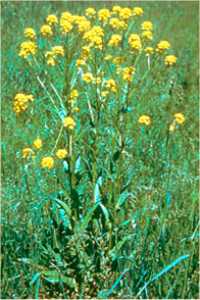 Mustard Plant
Mustard Plant
|
This semi-drying oil is obtained from the seed, as well as being edible it is also used as a lubricant, illuminant and in making soap. |
When mixed with water (or chewed), a chemical reaction occurs between an enzyme and a glucoside from the seeds, resulting in the production of the oil allyl isothiocyanate.
Mustard is widely known for its sharp flavor. This characteristic flavor is an essential component of many dressings and sauces world-wide. Unlike other "hot" flavors, the flavor profile of mustard does not linger. Rather it presents itself quickly, dissipates, and leaves little or no after-taste. Mustard greens are extremely high in vitamin A, vitamin E, vitamin C, vitamin K and beta-carotene. They also contain vitamin B6, folic acid, magnesium, calcium, iron, niacin, and are an excellent source of phytochemicals thought to prevent cancer.
|
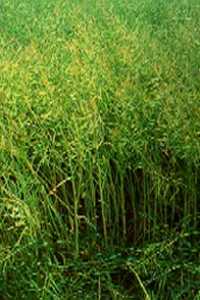 Mustard Field
Mustard Field
|
The mustard genus, Brassica, includes choy sam, kai lan, kai choy, broccoli, cabbage, cauliflower, turnips, rapeseed and radishes. The mustard family also includes plants grown for their leaves, like arugula, a number of Oriental greens, as well as mustard greens.
Three main types of mustard are grown for their seeds, namely;
Brown Mustard is most commonly forund in Malaysia, average in taste, a round hard seed, varying in colour from light to redish to dark brown. It is more pungent and smaller in size than the white variety. It is less pungent and almost the same size than the blackvariety.
White Mustard is more popular in the Western countries, a round hard seed, beige or straw coloured. Its light outer skin is removed before sale. With its milder flavour and good preservative qualities, this is the one that is most commonly used in ballpark mustard and in pickling.
Black Mustard is the most pungent of the three, a round hard seed, varying in colour from dark brown to black, similar in size to the brown variety, smaller than the white variety.
|
Mustard seed was so common in India that when a woman, Kisa Gotami whose child had died, brought her dead child, to the Buddha and asked that He return the child to life. The Buddha asked her to go out into the community and bring back to him a single mustard seed taken from a house where no person had died. When she could find no household that had been spared death's
|
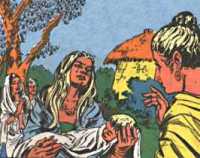
|
|
unremitting hand, the insight into the impermanence of all conditioned phenomena arose in her mind. And so, Kisa Gotami was able to go beyond "the death of sons", beyond sorrow. Khuddaka Nikaya, Chapter VIII, Verse 114 (Kisa Gotami).
|
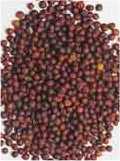
|
Common and Scientific names:
Brown Mustard: Brassica juncea
White Mustard: Brassica alba (Bioss)., = Brassica hirta, = Sinapis alba (Linn.)
Black Mustard: Brassica nigra (Linn.), = Brassica sinapioides (Roth.), = Sinapis nigra (Linn.)
Chinese name: Jie Zi 
Malay name: Biji Sawi,
Indian name: Rai
|
THE MUSTARD FLOWERS AND PLANTS
|

|
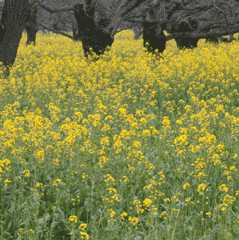
|
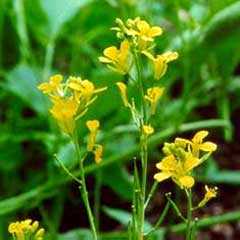
|
 |
click to print this article |
 |
back to medicinal plants archive |
 |
back to articles archive |
 |
back to e-zine main |
|
|

